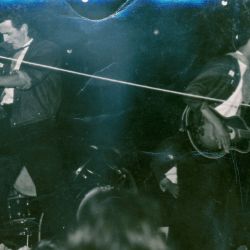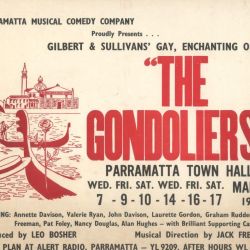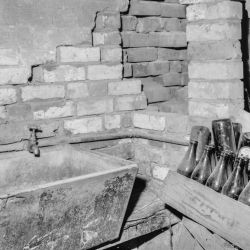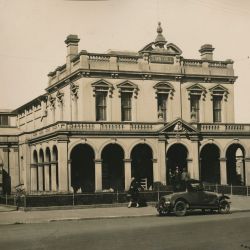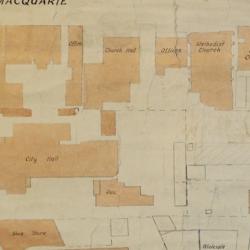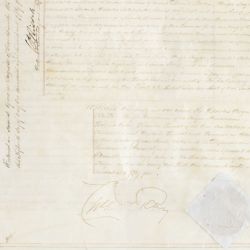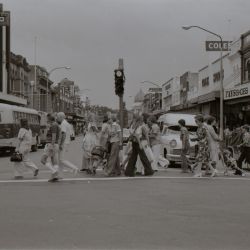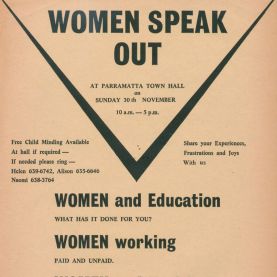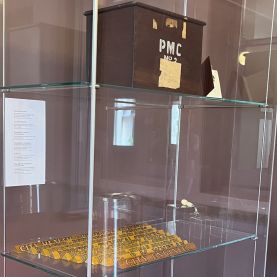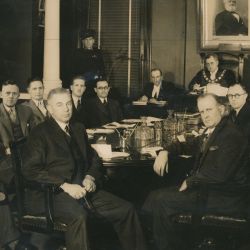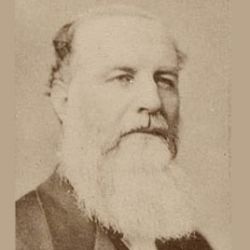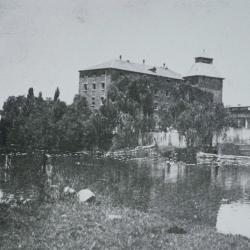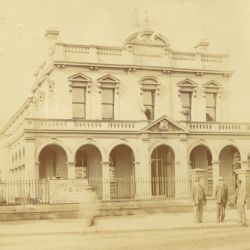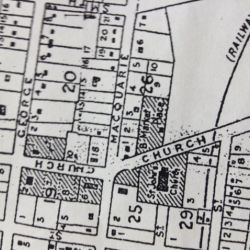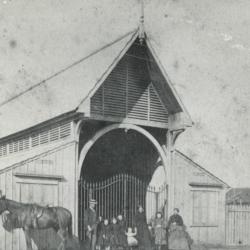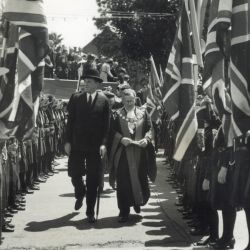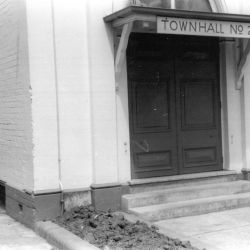Parramatta Town Hall is an important cultural and historical landmark. Located in the heart of the CBD, at 7 Parramatta Square, Parramatta Town Hall has a rich heritage and cultural identity having served as a central gathering place since 1883.
Described as a Victorian Free classical building, this significant building has been faithfully restored and upgraded to include contemporary features that complement the iconic buildings unique architectural charm and beauty.
The City of Parramatta Research and Collections team have curated and installed heritage displays throughout the Town Hall. We draw upon our heritage archives and cultural collections to present an interesting insight into the history and heritage of this beautiful building. Explore our stories as you virtually move through the building.
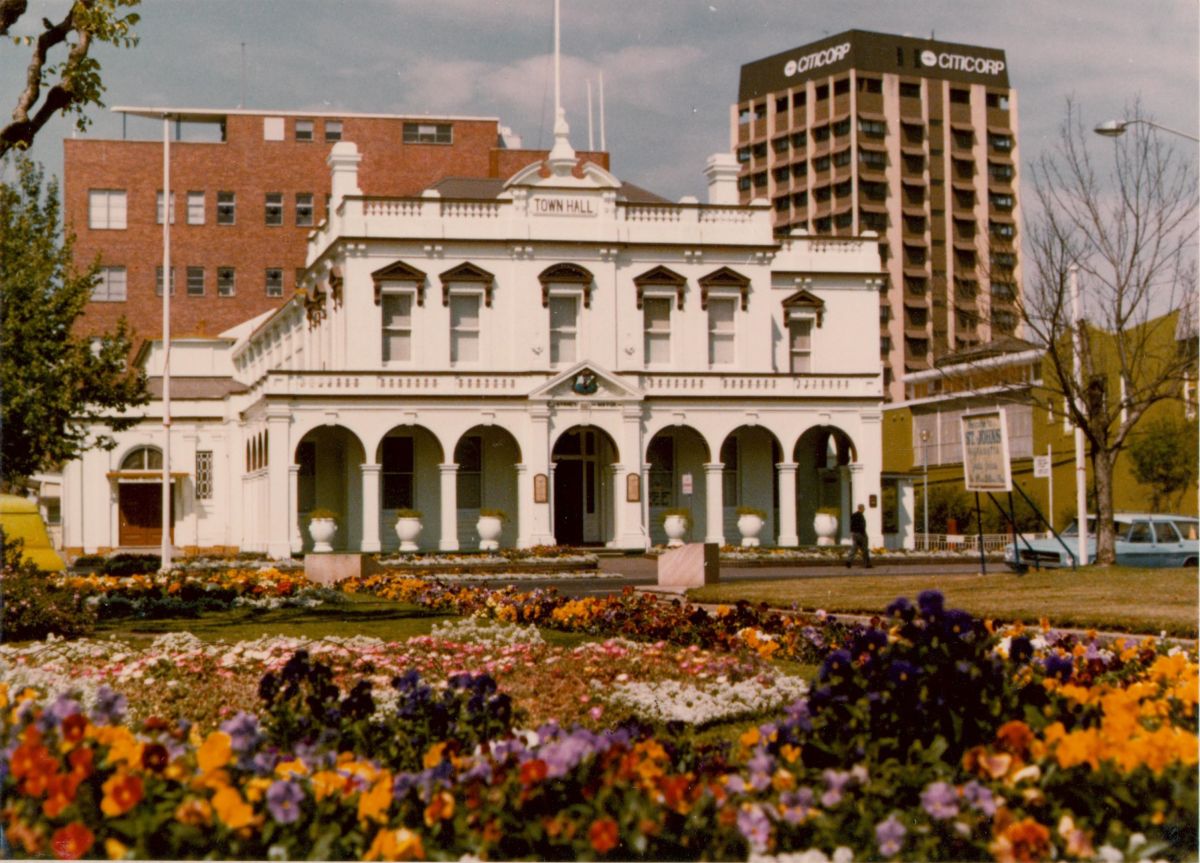
Explore the history and heritage of Parramatta Town Hall, and our heritage displays, through the articles and images presented below.
Parramatta WW1 Honour Boards
The entrance hall and stairway are a fitting place to display our Parramatta WWI honour boards - these two boards honour the people of Parramatta that served in what is known as 'the Great War'.
The board on the stairway contains 141 inscribed name plates of service personnel ‘who answered the call’ between 1914 and 1919. Men who predominantly hailed from the Municipality of Dundas (1889-1949) which at the time included the suburbs of Carlingford, Dundas, Epping, Eastwood. Also included were names from neighbouring suburbs like Auburn, Ermington, Flemington, Granville, Homebush, Lidcombe, Merrylands, Parramatta and Rydalmere.
The larger board in the entrance is for the enduring memory of the citizens of Parramatta and District who served in the Great War.
Follow this link to access further reading on the Roll of Honour and citizens who served in the Great War.
Just beyond the entry hall, the walls come to life with a display of images, newspaper articles and vintage posters celebrating the artists, the companies and their performances in the Great Hall.
The first performance to grace the stage of the Great Hall was the Parramatta Glee Club's presentation of Haydn’s oratorio, “The Creation,” on the 4th of September 1883. Parramatta Town Hall hosted exhibitions, orchestras, operas, bands, theatre and pantomimes, plus Mayoral and debutante balls. The floor in the Great Hall swirled with dancers doing the foxtrot, jive, jitterbug, boogie woogie and the Charleston shuffle. The Hall was hired for meetings and events by hundreds of local organisations including the Red Cross, the P&C Association, the Parramatta Art Society, the Parramatta Canary and Cage Bird Society and the Parramatta and District Rugby Club. There were public speaking classes, dance and drama classes, and physical culture classes. Plus, magicians entertained crowds with their tricks and psychics amazed people by foretelling their fortunes. It was a place of learning and curiosity for the community.
A most unusual job title for a Council employee is that of the “Inspector of Nuisances”.
The Inspector of Nuisances was responsible for keeping Parramatta sanitary and safe, and taking action against residents who did not comply with public health by-laws set out under the Municipalities Act 1858 and the Nuisances Prevention Act 1875. In 19th century Parramatta, some of the duties of the Inspector were to ensure that food was safe to eat, that animals were kept in clean conditions, and their carcasses disposed of appropriately. The Inspector checked if buildings were safe to live in, and ensured that waterways, drains, and cesspits were not injurious to public health. Patrick Hayes was Parramatta’s Inspector of Nuisances between 1877 and 1890, the first to occupy a small office next to the strong room. An excerpt from one of his reports gives a tally of the number of water closets (toilets) in each ward. Mr Hayes took it upon himself to extend his official duties. It was reported that he went about policing young larrikins on the streets of Parramatta, narrowly escaping a large stone hurled at him by one cowardly ruffian, as described in the Evening News, in December 1883.
If you take a peek into the Vault Room, located within the Inspector of Nuisance - Meeting Room 1, you'll see a display of civic regalia.
The Mayors and Lord Mayors of the City of Parramatta wear civic regalia on formal occasions such as council meetings and citizenship ceremonies. This set of robes and accessories were used from the 1960s-1980s. In case you're not able to visit, we've done a 3D scan for you - view it here!
And...... follow the link to learn of 'The History of Mayoral Regalia'
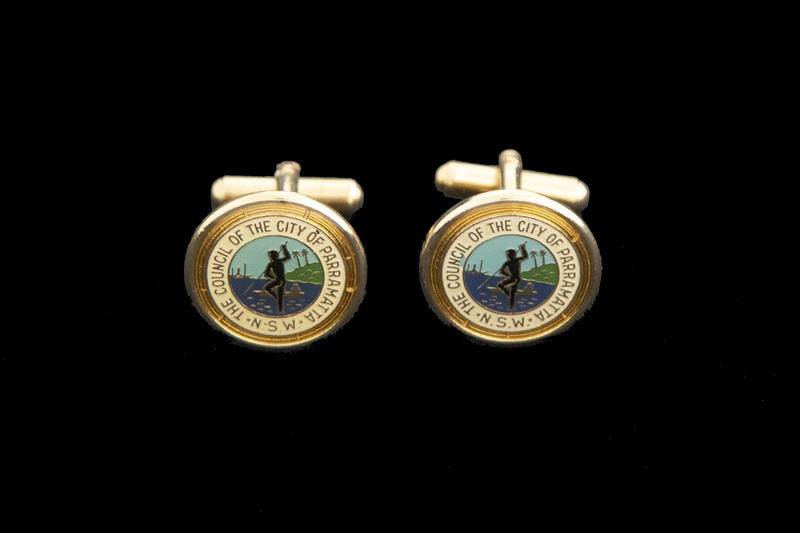
Visit our collection data base browser to see more items associated with civic regalia.
The Town Clerk was responsible for the administration of the business records of the local government area, which in the case of Parramatta in the 19th century was the Borough Council. The records included compiling and indexing minutes of meetings, receiving and sending correspondence, oversight of staff appointments and administration of council buildings such as the town hall.
The heritage displays within the Town Clerk Room focus on the development and establishment of the Town Hall.
The Lounge area in Town Hall features posters, newspaper clippings and documents illustrating the Parramatta as 'A Place of Change'
Parramatta Town Hall has been a place where civic and public debates have been heard for over 140 years.
There have been public discussions, rallies, protests, campaigns, and votes cast to determine community outcomes and government elections.
James Byrnes (1806-1886) was Member for Parramatta in the Legislative Assembly from 1858–61, 1864– 72 and served as Secretary for Public Works 1866–68 and 1870–72.
He was also mayor from 1862–1866. His local supporters were Richard Harper, Hugh Fairclough, and T.W. Bowden. A devout Methodist, Byrnes' public life was soured by an intolerant personality. Though not well-educated, he was an astute businessman and when his parliamentary career ended in defeat, he became a public servant responsible for the valuation of land resumed by the railway, a position he held until his death at Parramatta in 1886.
His youngest son, Charles Joseph Byrnes (1835–1917), followed him into the local political arena, being member for Parramatta from 1874–77 and 1880–1882 and mayor from 1875–1882. Born in George Street, Parramatta where he lived all his life, C.J. Byrnes trained as a solicitor and ran the family wool mill at Parramatta and later at Granville. He married Anna Phillips, daughter of local man George Phillips and they had four children – Charles Ernest Byrnes, a solicitor at Parramatta, Selwyn and Eustace who managed the family's coal mining interests at the Mount Pleasant Colliery on the south coast, and a daughter, Clare. (excerpt CMP Tanner Kibble Denton Architects August 2021)
Prepared for City of Parramatta. August 2021. Issue A Project number 210024
The Statement of Cultural Significance for the building is as follows: Significance of the Town Hall
The Parramatta Town Hall demonstrates the longevity and success of one of the older local government organisations in Australia. The building is a good example of the work of influential architect George Allen Mansfield and is representative of council chambers and town halls constructed in NSW from the 1880s to the 1930s.
The Parramatta Town Hall is a major element in the Church Street townscape, one of the finest townscape compositions in metropolitan Sydney. The Parramatta Town Hall has been associated with persons and events involved in the development of the City of Parramatta and is closely associated with the evolution of the system of local government in New South Wales. It is considered to have a high level of social significance. (part)
Access the full Parramatta Town Hall Conservation Management Plan here.



